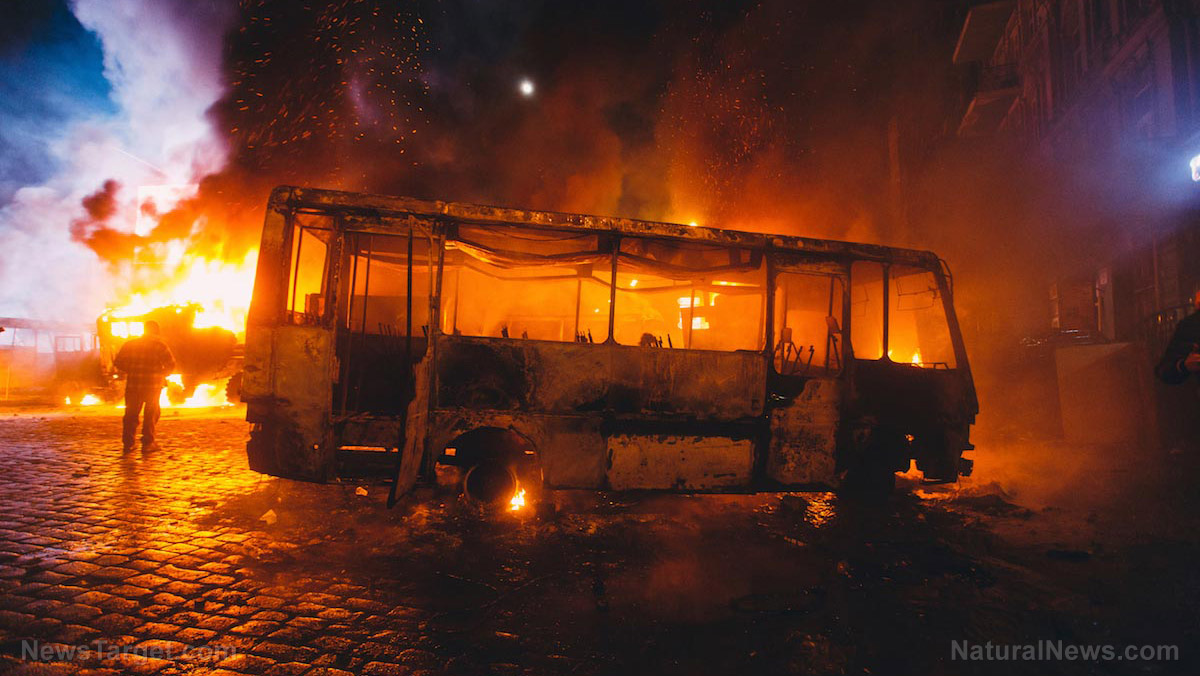
"Right now, it's been static for the past two and a half, three months, so it really hasn't moved very much, but that could change in an instant," Rizzutto said.
The geyser, which originated from the southern end of the San Andreas Fault, is the only known moving geyser in the world. It is sometimes referred to as a "mud pot" because it looks like a bubbling pool of mud. It has been around since 1953 but only started moving in 2016 after an earthquake in the area.
Caltrans is currently monitoring the geyser for its potential to affect roadways. But does the appearance of the geyser indicate that the San Andreas Fault is about to rupture?
Moving geyser is a potential road and health hazard
The Niland Geyser is not like ordinary geysers, which are hot springs that periodically spout jets of water and steam. The mud pot is less like a hot spring and more like a puddle of mud that emits water and carbon dioxide. The carbon dioxide seeps up from deep underground after being released by an earthquake.
The geyser also spews out hydrogen sulfide, a toxic gas that smells like rotten eggs. If inhaled, hydrogen sulfide can cause headaches as well as eye, lung, nose and throat irritation.
But Caltrans' biggest concern is where the geyser is headed next. The bubbling pot of mud may crop up in the middle of the Union Pacific Railroad or the State Route 111 near Niland. In fact, it has already encroached on the Union Pacific's right of way.
The department is also worried about how quickly the mud pot has changed location recently. The geyser traveled only 60 feet in the first six months after its first movement, but it then covered another 60 feet in a single day. Overall, it had moved roughly 250 feet from where it was a decade ago.
In 2019, the transportation authority considered a number of options, including creating a detour, to minimize road hazards. But a detour would take drivers 80 miles out of the way and the 111 is important for agriculture in the area. So Caltrans ended up building a temporary road parallel to the 111.
"It's 50 feet from our existing roadway but it's hundreds of feet from the new alignment we made for the detour," Rizzutto said.
The department also placed sheet pile walls to direct water to a gravel wash. It also made a subsurface drainage system to reduce the amount of water that the geyser emits, which is estimated to be around 40,000 gallons a day. According to Rizzutto, that amount of water can weaken the road over time.
Caltrans is waiting until the geyser has moved far enough south before beginning repairs worth $19 million on the 111. It says that though the geyser currently poses no danger to motorists, the area around it is closed to prevent the arrival of tourists who may end up inhaling the toxic gas coming out of the geyser. (Related: Israel sidewalks emitting steam due to a mysterious "trapped energy" source.)
Is the geyser a sign of the "Big One"?
The source of the mud feeding into the Niland Geyser is located in the southern end of the San Andreas Fault. The fearsome fault is said to be long overdue for a massive earthquake commonly called the "Big One." This is because several sections of the fault have not ruptured for several centuries.
But the geyser's presence and movement do not indicate that an earthquake is imminent. Mud pots are commonly found near plate boundaries such as the San Andreas Fault and are often likened to sinkholes, or cavities in the ground that form when groundwater dissolves the soil.
Like sinkholes, the Niland Geyser forms when water gets forced upward through the soil. The difference is that the geyser, just like stationary mud pots, is filled with mud while sinkholes are hollow.
Overall, the most realistic threats posed by the Niland Geyser is its effect on nearby roads, as well as the toxic hydrogen sulfide that it emits. But Caltrans is already monitoring the geyser and has cordoned off the area to prevent people from coming near the mud pot.
Visit Disaster.news for more about earthquakes and other natural disasters.
Sources include:
Please contact us for more information.






















